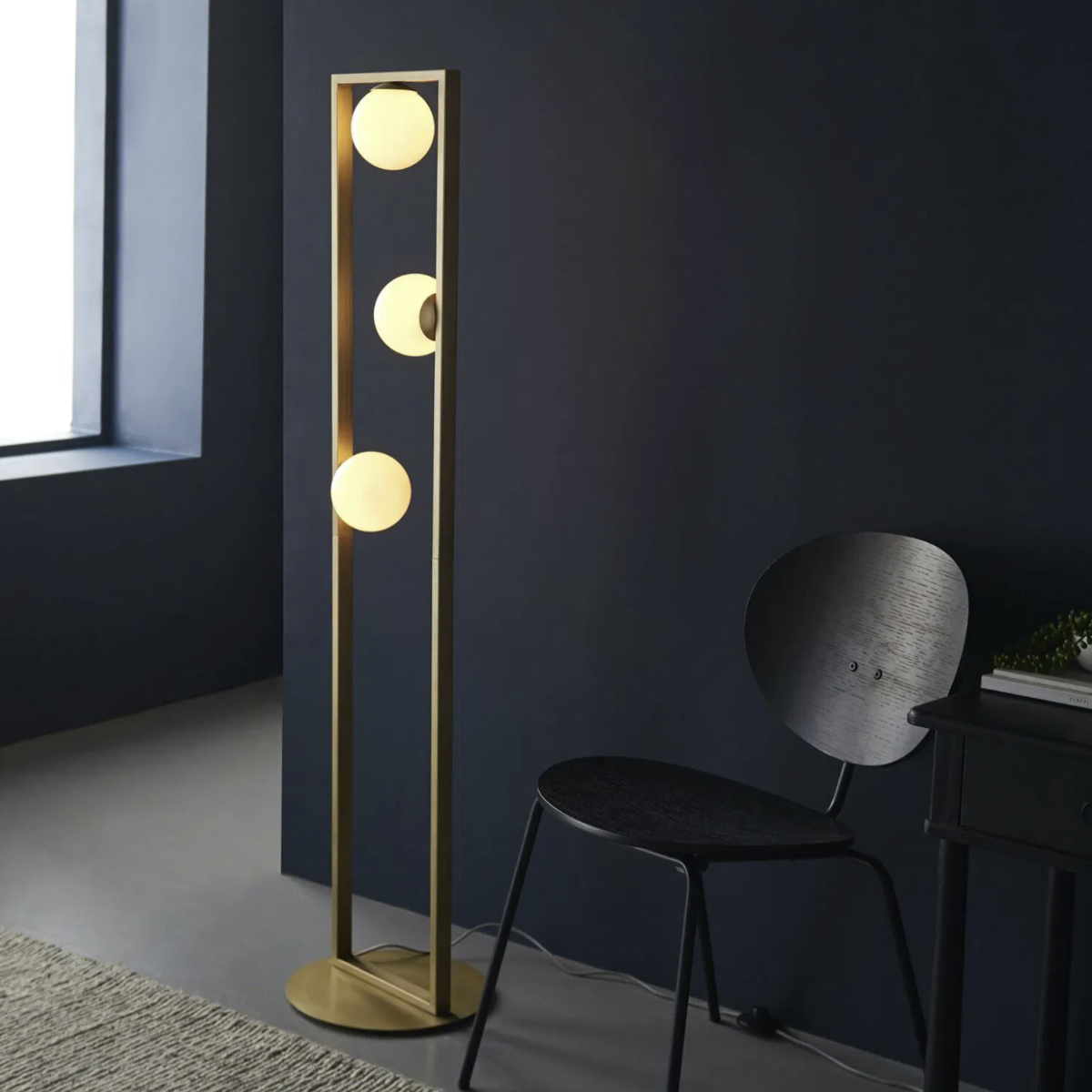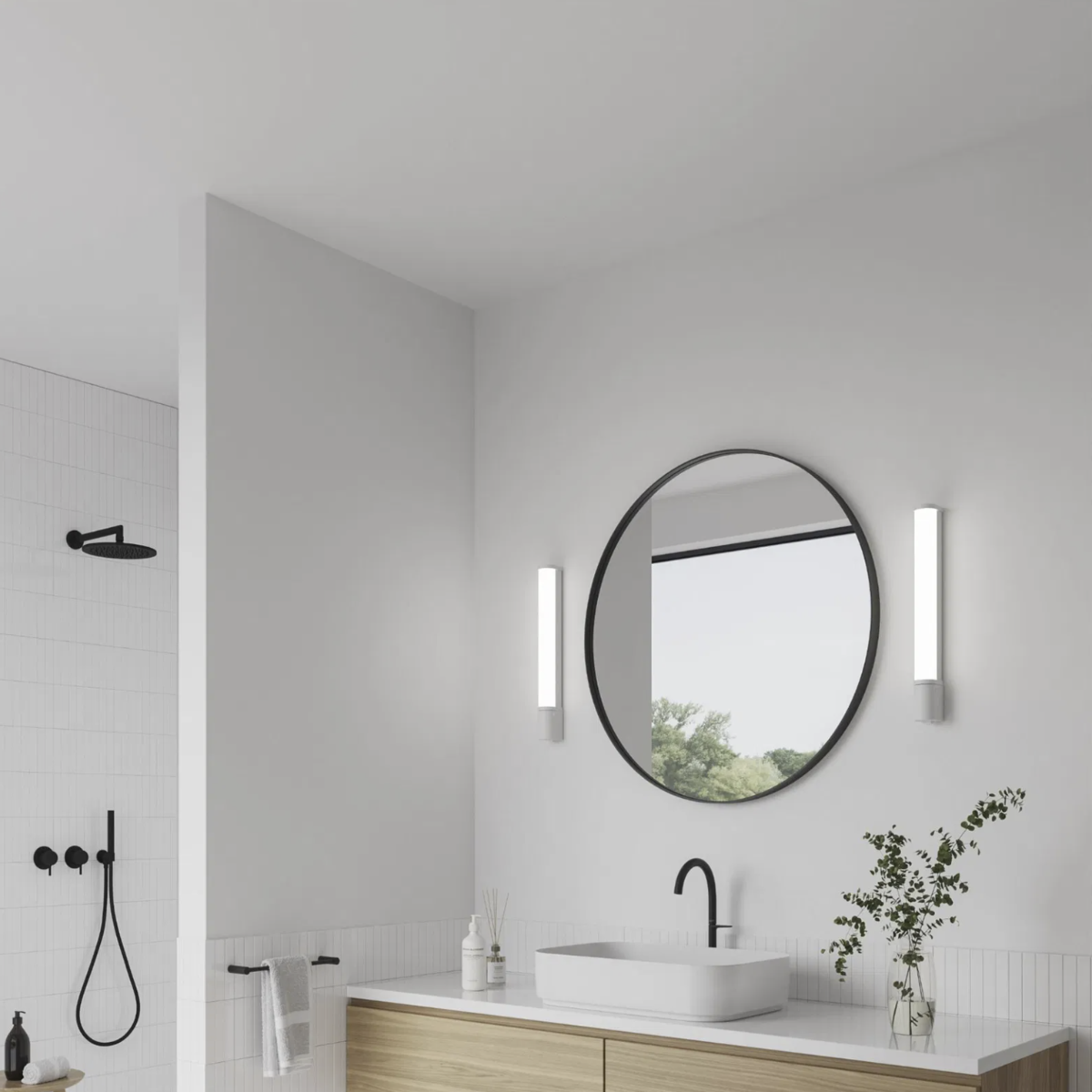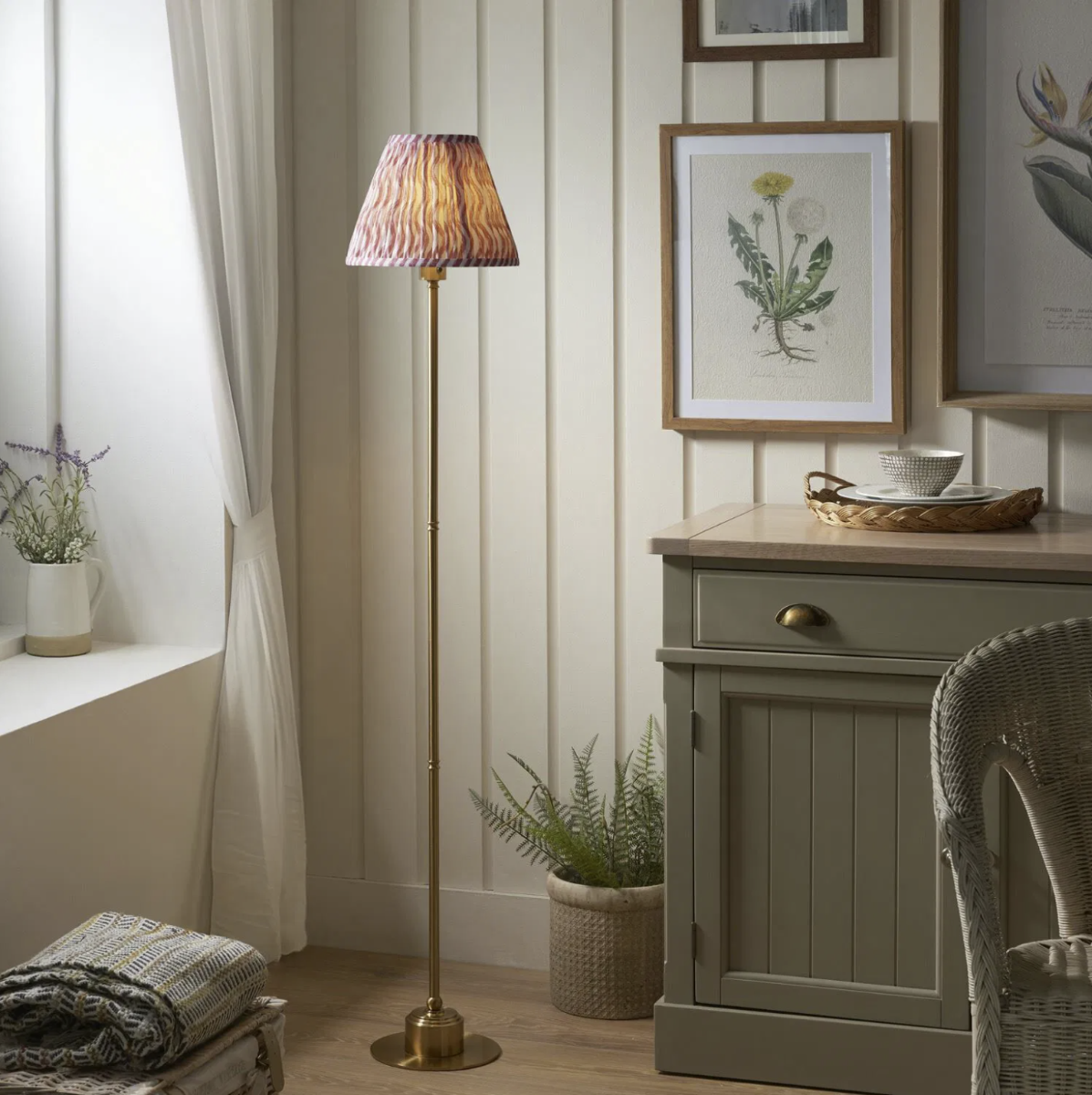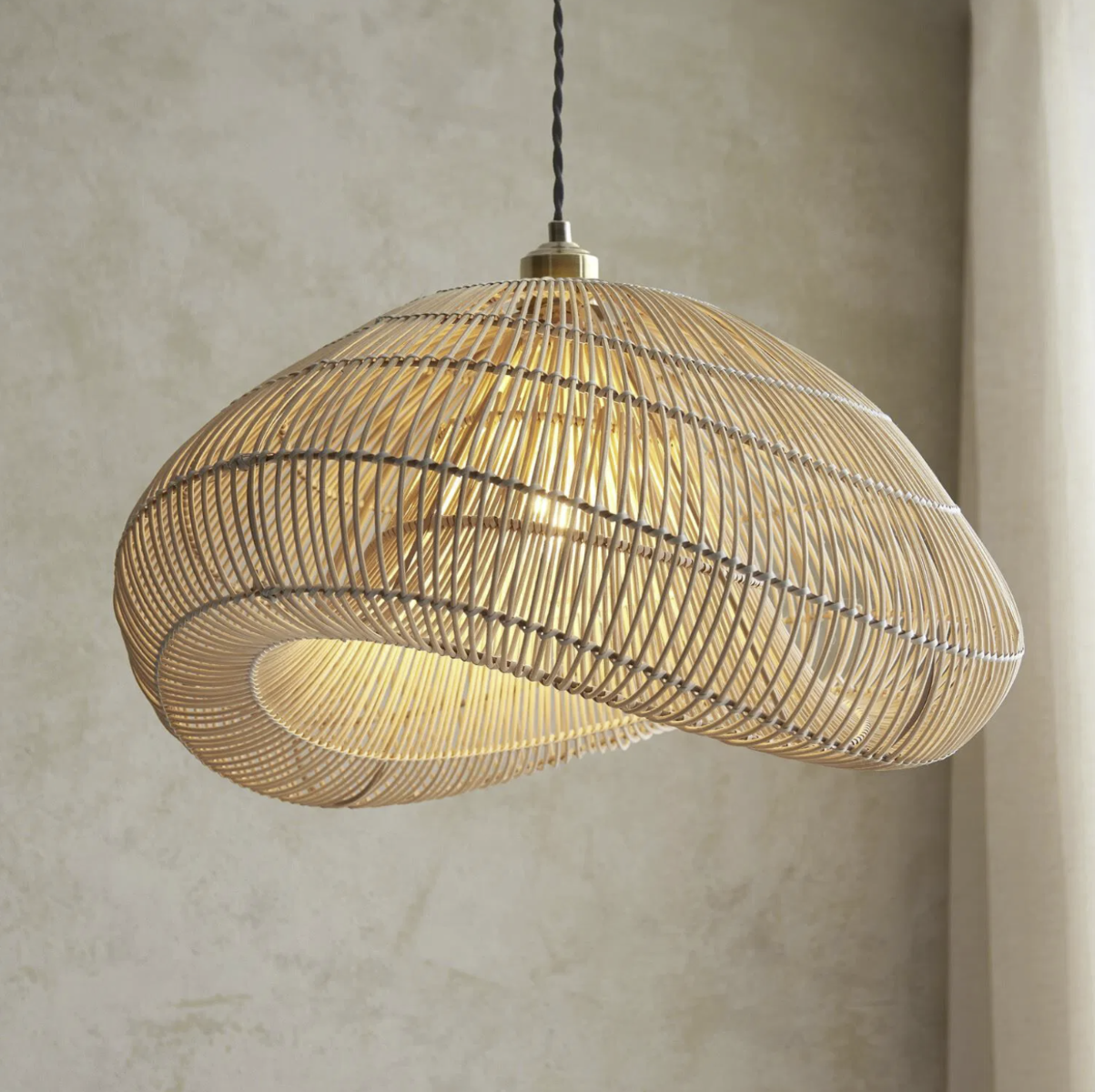The terms and language within the lighting industry, used by both manufacturers and retailers can be confusing. The list here attempts to clarify just a few of those terms to help you choose the perfect lights for your home.
Accent Lighting
Used to emphasise a particular object or area.
Ambient Lighting
General lighting in an area, including daylight; does not include task lighting, spot lighting, cabinet lighting etc.
Amperes
Also known as Amps which is a measure of electrical current. In incandescent lamps, the current is related to voltage and power. Watts (power) = Volts x Amps (current).
Ballast
A piece of equipment or componentry needed to start and to control the flow of current to fluorescent lamps.
Bayonet (BC)
A type of lamp base (see Lamp base) which uses locator pins instead of threads to secure the bulb to the fixture base. The bulb is locked into place by pushing down and turning clockwise.
Beam Angle
The angle of the cone of light from reflectorized lamps, such as GU10 & MR16 halogen lamps. The angle measured is where the intensity of the beam becomes 50% of maximum.
Bi-Pin
Any lamp base with two metal pins for electrical contact; typical lamp base for fluorescent tube.
Brightness
Brightness could refer to any number of several technical terms used in lighting, is a vague term and best avoided when specifying.
Bulb
A general way of referring to a lamp or light source. “Bulb” refers to the outer glass bulb containing the light source itself.
Candela (CD)
Measurement of luminous intensity of a source in a given direction.
Colour Rendering Index (CRI)
An international system used for rating the ability of the light source to render object colours. The higher the CRI (based upon a 0-100 scale), the richer the colours appear.
Colour temperature
Description of the colour of a light source, colour temperatures over 5000 K are often called "cool white" (bluish), while lower colour temperatures (2700–3000 K) are called "warm white" (yellowish). See Correlated Colour Temperature.

Correlated Colour Temperature (CCT)
Expressed in Kelvins using the symbol K, a unit of measure for absolute temperature. The actual number indicating the degree of “yellowness” or “blueness” of the light source. Measured in Kelvins or K.
Compact Fluorescent Lamp (CFL)
General term applied to fluorescent lamps that are single-ended and have smaller diameter tubes that are bent to form a compact shape, close to the size of the more traditional incandescent lamp. Some CFLs have integral ballasts and medium or candelabra screw bases for easy replacement of incandescent lamps.
Cool White
A term loosely used to denote a colour temperature of approximately 4000k to 5000K.
Current Type (AC/DC)
To denote when the voltage is Alternating Current (AC) or Direct Current (DC).
Daylight White
A term loosely used to denote a colour temperature of approximately 5500k to 6500K.
Dichroic Reflector
A reflector that reflects one region of the spectrum while allowing the other region(s) to pass through. A lamp with a dichroic reflector, such as a MR16, will have a “cool beam” because most of the heat has been removed from the beam by allowing it to pass through the reflector.
Dimmable
Denotes whether the light output or lamp lumens (Lm) can be varied while maintaining reliability.
Dimmer (Dimming Control)
A device used to lower the light output or lamp lumens (Lm) by reducing the wattage it is being operated at.
Downlight (or Downlighter)
Luminaire usually recessed in the ceiling.
Efficacy
A measurement of how effective the light source is in converting electrical power to lumens. Expressed as Lumens per Watt (Lm per W).
Electromagnetic Ballast
A ballast that consists primarily of transformer-like copper windings on a steel or iron core.
Electronic Ballast
Electronic ballasts use electronic components and operate fluorescent lamps. The benefits are increased lamp efficiency. They are also smaller compared to electromagnetic ballasts.
Emergency Lighting
Lighting with a batter back up installed and provided for use when the supply to the normal lighting fails.
Flicker
Variation in light level caused by AC operation that can lead to a strobing effect of the light source; not always visible to the naked eye.
Flood
Beam pattern of a reflector lamp, which disperses the light over a wide beam angle, typically 20 degrees or more.
Floodlight
A luminaire used to illuminate a scene or object to a greater degree than its surroundings.
Fluorescent Lamp
A high efficiency lamp which uses an electric discharge through low pressure mercury vapor to produce ultraviolet (UV) energy creating light.
Frequency
The stated operating frequency (Hz) of a discharge lamp.
Halogen Lamp
An incandescent lamp with a filament that is surrounded by halogen gases. Halogen gases allow the filaments to be operated at higher temperatures, efficiencies and Lumens.
Incandescent Lamp
Light source that utilises a thin filament wire (usually tungsten) heated to white heat by an electric current passing through it.
Indirect Lighting
Method of lighting a space by directing the light from luminaires upwards towards a ceiling or wall. The light scattered off this surface produces a more diffused, non-directional illumination for the space.
Integral
Term for a compact fluorescent lamp which includes a built-in ballast.
Integrated LED
Term given to Led lights sources that are in a luminaire which are non-replaceable.
Kelvin
Unit of temperature starting from absolute zero, running parallel to the Celsius scale. 0ºC is 273K.
Kilowatt (kW)
Measure of electrical power equal to 1000 watts.
Kilowatt Hour (kWh)
Standard measure of electrical energy and the typical billing unit used by utility companies for electricity use; a 60W lamp operated for 10 hours consumes 600 watt hours or 0.6 kWh.
Lamp
Term used to describe the light source of the luminaires. Also used to describe the fixture itself, e.g. floor or table lamp.
Lamp Base and Socket
The socket is the component connected to the electrical supply; the base is the end of the lamp that fits into the socket.
Lamp Types
General term for light sources including Incandescent, Fluorescent, Halogen & LED.
Lens
Transparent component which controls the distribution of light by redirecting individual rays. Luminaires often have lenses in addition to reflectors.
Light
Energy that can be seen by the human eye. Light is measured in lumens (Lm).
Light Emitting Diode (LED)
A semi conductor light source that emits light when current flows through it.
Light Pollution
Light that is directed to areas where it is not needed. Light pollution directed or reflected into the sky creates wasted light, makes it difficult to see stars above cities and impacts negatively on wildlife.
Lumen Maintenance
A measure of how well a lamp maintains its light output over time.
Lumens (Lm)
Quantity of light emitted by a source.
Luminaire
A complete lighting unit. A luminaire is also referred to as a fixture.
MR-16 and MR-11
Low voltage compact reflector lamps used for accent and spot lighting.
Spot
A general term referring to a reflector lamp with a tight beam of light, typically around 10 degrees or less. It also refers to the type of luminaire which produces these narrow beams of light.
Task Lighting
Lighting to assist in performing a specialised task, for example an adjustable table or floor lamp for reading a book.
Voltage
A measurement of the electromotive force in an electrical circuit or device, expressed in volts (V).
Warm White
Colour temperature of around 3000K, providing a yellowish white light.
Watt (W)
Unit of electrical power.
If you need any advice or help when picking your lights then please email us on info@firstchoicelighting.co.uk or call us on 0203 137 8400.






